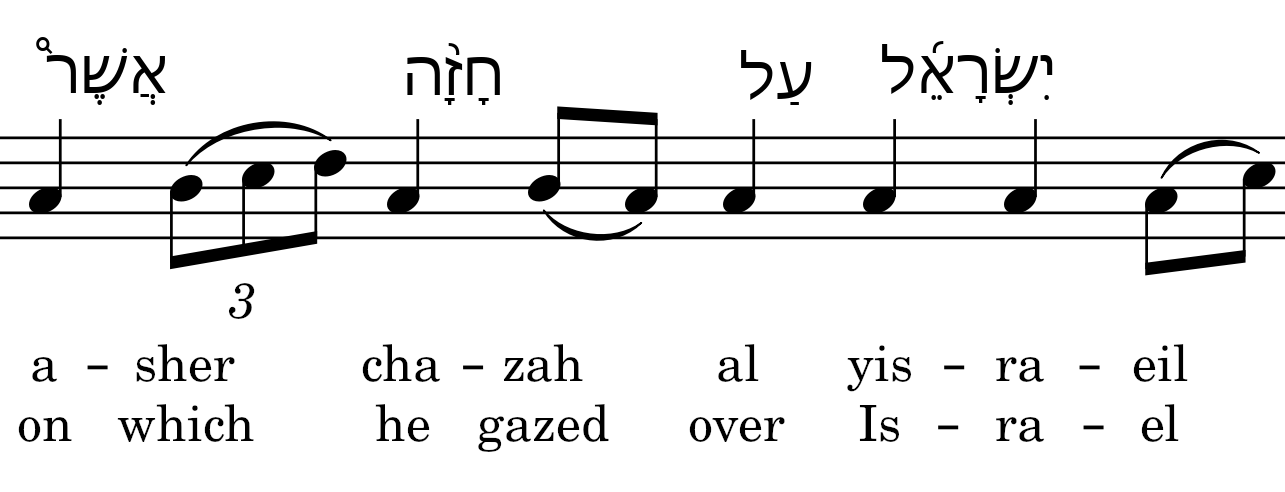This is a first report on underlaying the music of Amos with an English lyric. I have let stand complete the transcribed underlay, read left to right as expected, and the square text above the notes, words read left to right but letters of course read right to left. The Hebrew underlay and the music are fully automated - untouched by human hand, a rendering of my source text (WLC). The transcription was coded in 2013 and is a rough phonetic rendering.
I have done just the first two chapters so far. The pattern in the music follows the pattern in the text as one would expect. One of my problems composing, when I do, is to know how to use repetition. Amos uses repetition in the first two chapters to great effect. Notice the consistency one would expect in the opening phrase of each of the 8 sections as described below. Then notice the variations in the consequences stated. The demonstration is with snippets of music. The full score is below.
 |
Note how what we might think of as an unimportant word
is emphasized by the qarne ornament. |
Begin with verse 1 which states the historical context. I notice that the description is of the prophet gazing and the description is on the subdominant, after the mid point rest. The prophet is therefore 'at rest' and his eye is the means of communication.
That might be pulling a rabbit out of a hat, but I think the reciting note has suggestive qualities.
 |
| Comparing two settings of 'in the days of' |
Also note that Uzziah gets the proclamation on the dominant, and then a quiet low phrase to indicate his kingship over Judah, but Jeroboam gets a recitation on the (possibly) plaintif sixth. It suggests to me a subtext, "Why did we have to put up with this ruler in Israel?"
It is quite obvious that in chapters 1 and 2 there are 8 repetitions of a pattern. What does the music say about the variations within the repetitions. Again here are some snippets from the variability.
Damascus (1:3-5)
 |
| The return to the tonic is by way of a descent of a fifth. |
Gaza (1:6-8)
 |
| A similar trope for the second of the eight phrases. |
Tyre (1:9-10)
 |
| The third of the eight words continues with a more elaborate phrasing. |
Edom (1:11-12)
 |
The fourth accusation remains on the rest note
but rises immediately to the sixth. |
the children of Ammon (1:13-15)
 |
| The fifth accusation rises only to the dominant and approaches the tonic without the lower notes. |
Moab (2:1-3)
 |
| The sixth word reverts to a drop of a fifth, but the continuation differs. |
Judah (2:4-5)
The word to Judah is like the word to Tyre but followed by a long recitation on the dominant.
Israel (2:6-16)
The word to Israel is unlike all the others, reproach after reproach to the end of the chapter.
... and the next 5 chapters - but hold on, the music is bound to change. Analysis will not yield to speed. And music has to be performed, not described.
The complete two chapters follow.








No comments:
Post a Comment